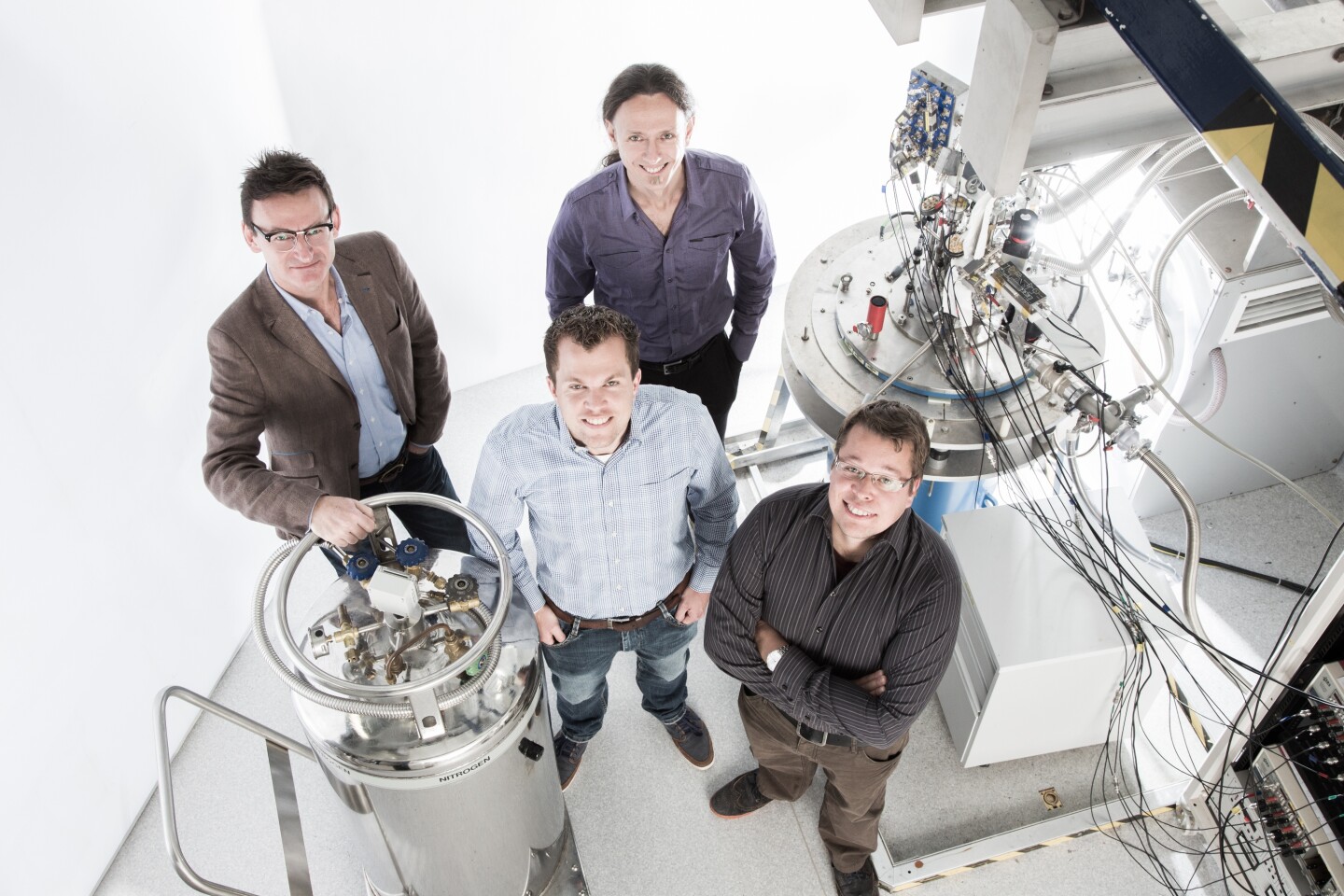In what are claimed to be new world records, two teams working in parallel at the University of New South Wales (UNSW) in Australia have each found solutions to problems facing the advancement of silicon quantum computers. The first involves processing quantum data with an accuracy above 99 percent, while the second is the ability to store coherent quantum information for more than thirty seconds. Both of these records represent milestones in the eventual realization of super-powerful quantum computers.
Each of the teams produced two types of quantum bits (the vertical and horizontal polarization of an electron representing the binary state of 1 and 0 – known as qubits) in their research. One qubit, developed by the team led by Professor Andrew Dzurak, using an "artificial atom" produced in a MOSFET (Metal oxide semiconductor field effect transistor), and the other, developed by the team led by Associate Professor Andrea Morello, used a "natural" phosphorus atom to develop their qubit.
In both cases, keeping qubits in their fragile quantum states long enough to use them to store information and accurately read the results whilst ensuring that tiny error rates don’t quickly add up when millions of computations are performed, are integral factors in creating future quantum computers and the accuracy of the quantum algorithms that will drive them.

"For quantum computing to become a reality we need to operate the bits with very low error rates," said Professor Dzurak.
"We've now come up with two parallel pathways for building a quantum computer in silicon, each of which shows this super accuracy," added Associate Professor Morello.
Building on research conducted over the past three years, the two research teams have demonstrated that silicon can be used to create qubits, by showing that a single phosphorus atom could be used to imprison an electron – in a similar way to experimental the technique for storing qubits in diamonds for quantum teleportation. However the information stored on the electron spin was lost very quickly as the electron lost coherence.
To overcome this problem, a qubit was created using an electron trapped by electrodes inside a thin film of purified silicon, comprising only the silicon-28 isotope. As this isotope is completely devoid of magnetism, it does not disturb the quantum bit, yet it still has all the electrical properties of "ordinary" silicon, meaning that it could be used as part of an electronic device. As a result, the operations observed were able to achieve a remarkable 99.99 percent accuracy.

"The phosphorus atom contains in fact two qubits: the electron, and the nucleus. With the nucleus in particular, we have achieved accuracy close to 99.99 percent," said Dr Juha Muhonen, a post-doctoral researcher at UNSW. "That means only one error for every 10,000 quantum operations."
Similarly, the "natural atom" of phosphorous generated qubit was able to be held in place in the same silicon-28 layer. In this case, the nuclear spin of this atom was maintained for more than 30 seconds, meaning that the coherence of its information remained stable during that entire time.
"Coherence time is a measure of how long you can preserve quantum information before it's lost," said Professor Morello. "Half a minute is an eternity in the quantum world. Preserving a "quantum superposition" for such a long time, and inside what is basically a modified version of a normal transistor, is something that almost nobody believed possible until today."
The use of silicon chips in these demonstrations means that quantum computing may be made possible using a simple variation of modern integrated circuit technology. As such, quantum computers may not need to be constructed from esoteric, rare materials, but from silicon; one of the most common elements in the universe.
The next goal for the scientists is to construct entangled pairs of extremely precise qubits to demonstrate the technology for possible future use in quantum computers where many millions of qubits will be required to perform ultrafast calculations.
The respective team leaders explain their research in the video below.
The research was published in the journal journal Nature Nanotechnology.
Source: UNSW






